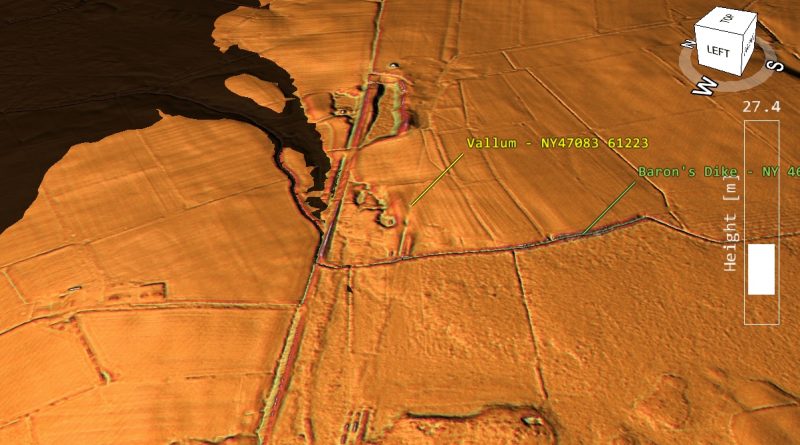
1010990 – The Vallum between the road to Laversdale at Oldwall and Baron’s Dike in wall miles 59 and 60
Scheduled Monument List Entry Ref: 1010990 – Grid Tile: NW45SE – Cumbria
GE Satellite Map
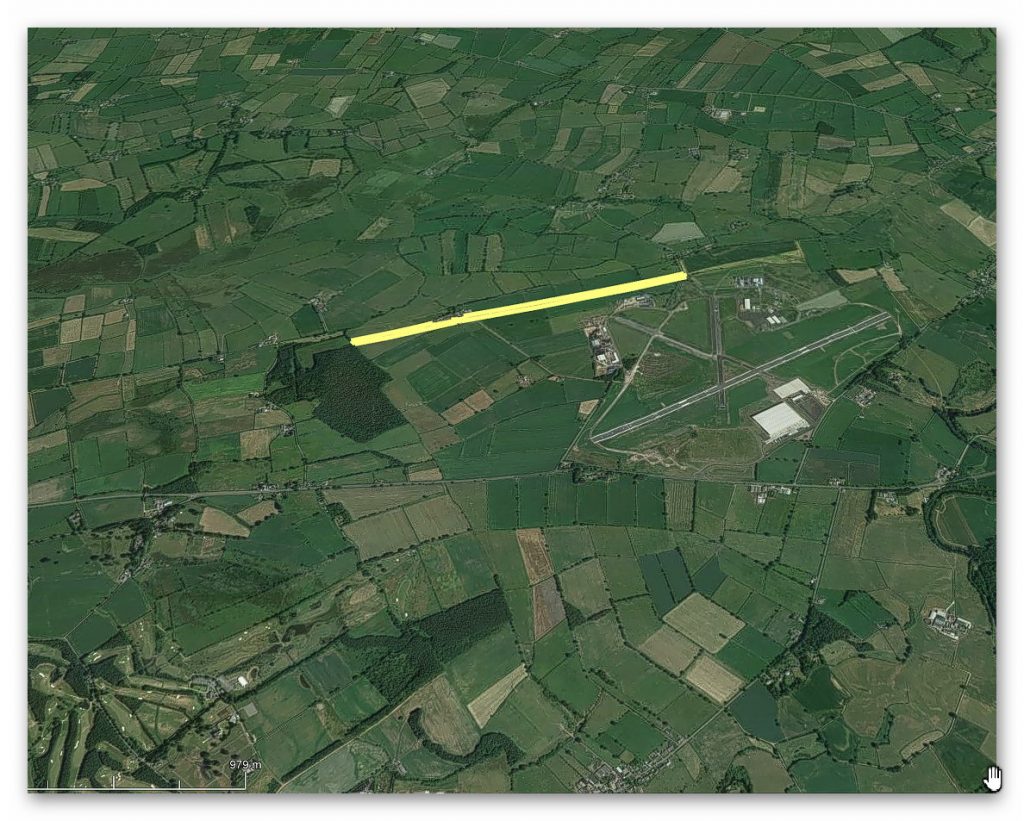
OS Map
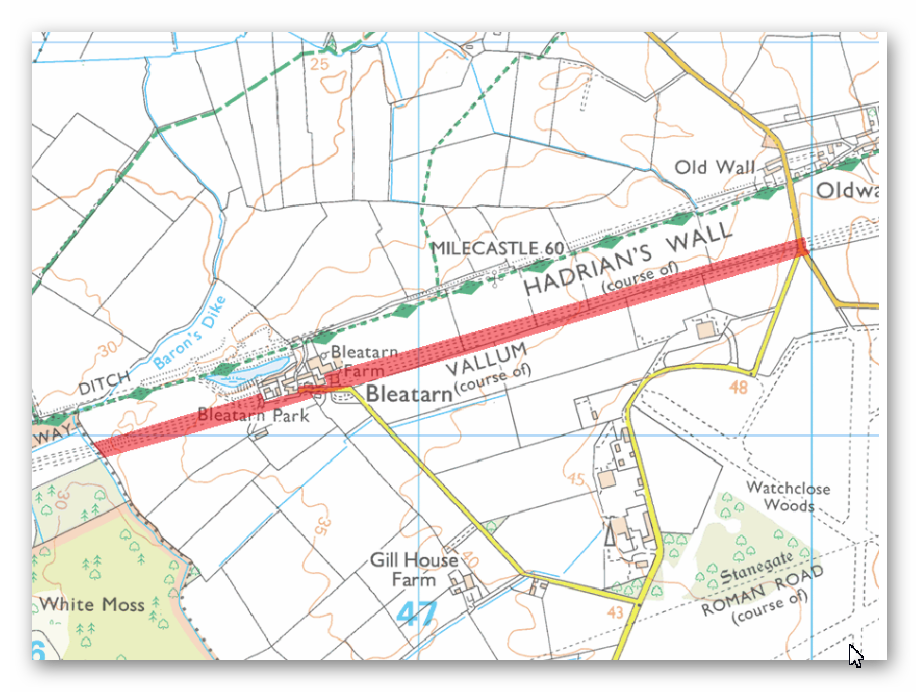
OS Map 1800s
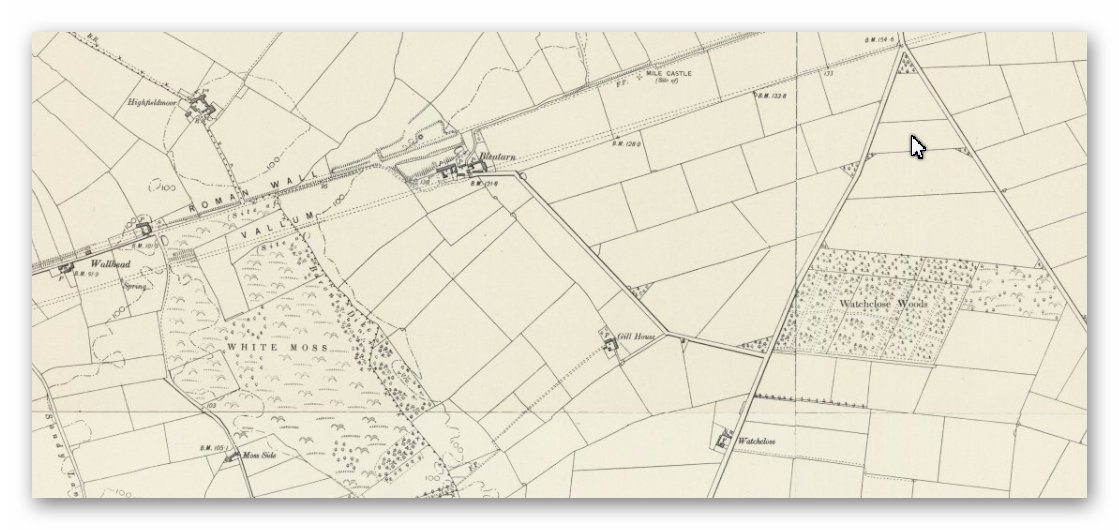
LiDAR Map
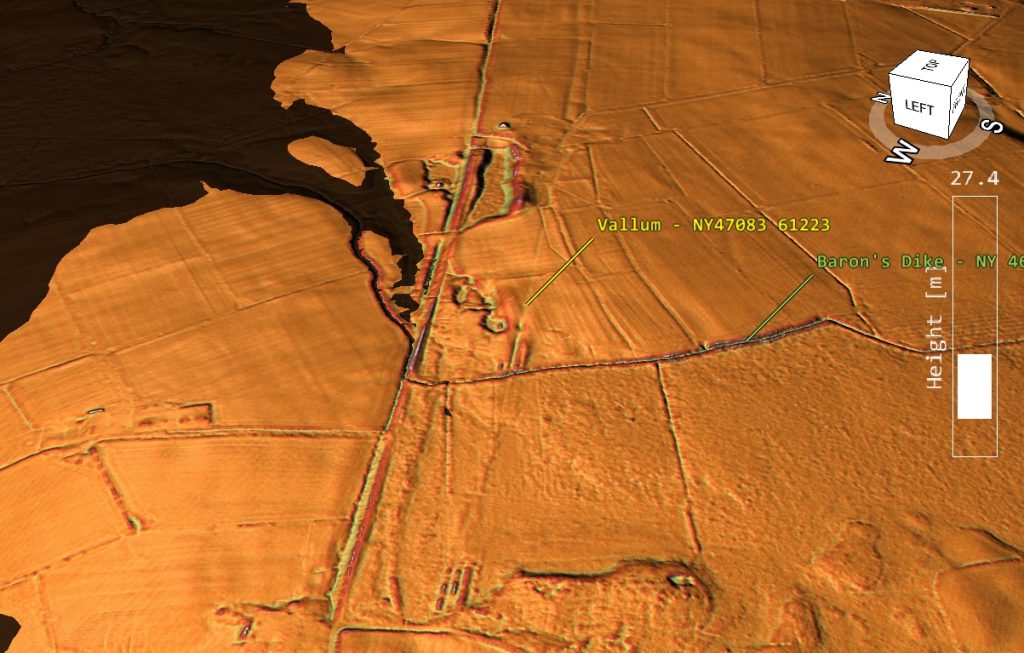
Dyke: NY 47083 61223
Length (m): 1,868
Orientation: W – E
Class Designation*:
Overall Width (m): 36
Ditch Width (m): 10
Bank Width (m): 13 x2
Connectivity**: Dyke
Ditch Shape: ?
Volume (cu.m): 24,484 (@ 1.3 depth)
Man hours to complete: 80,497
Estimated Construction Date: Roman
Number of Quarries*** (within 200m): 3
Number of Springs**** (within 200m): 0
Dyke: NY 46462 60837 (no scheduling)
Length (m): 2,467
Orientation: N – S
Class Designation*:
Overall Width (m): 18
Ditch Width (m): 8
Bank Width (m): 5
Connectivity**: River
Ditch Shape: ?
Volume (cu.m): 25,657 (@ 1.3 depth)
Man hours to complete: 85,523
Estimated Construction Date: ?
Number of Quarries*** (within 200m): 0
Number of Springs**** (within 200m): 0
Scheduled Monument Report:
The monument includes the section of vallum and its associated features between the road to Laversdale at Oldwall in the east and the west side of Baron’s Dike in the west. The vallum survives as a buried feature throughout most of this section. Its course is recognisable on the ground as slight depressions in fields and as distinct depressions in hedgelines which cross its course in the eastern half of this section. East of Baron’s Dike the vallum survives as a slight earthwork visible as four parallel flat topped mounds, 0.7m high. Excavations at Bleatarn by Haverfield in 1894-5 recovered remains of the vallum. This area is now partly built over. Archaeological remains have not been confirmed to survive below the modern buildings. Consequently the ground beneath the buildings is not included in the scheduling. Elsewhere there are no surface traces of the vallum. The excavations at Bleatarn suggested the existence of quarries here, possibly of Roman date, but the confusing nature of the reports questions the reliability of such an assertion. All field boundaries, buildings and road and track surfaces are excluded from the scheduling, although the ground beneath is included.
Comments:
Analysis shows that the Vellu seems to terminate when it meets Baron’s Dike – was this a source of water for the Roman Dyke?
References:
https://historicengland.org.uk/listing/the-list/list-entry/101990
https://prehistoric-britain.co.uk/dyke-construction-hydrology-101
https://prehistoric-britain.co.uk/gigantic-prehistoric-canals-dykes-wansdyke
Further Reading
For information about British Prehistory, visit www.prehistoric-britain.co.uk for the most extensive archaeology blogs and investigations collection, including modern LiDAR reports. This site also includes extracts and articles from the Robert John Langdon Trilogy about Britain in the Prehistoric period, including titles such as The Stonehenge Enigma, Dawn of the Lost Civilisation and the ultimate proof of Post Glacial Flooding and the landscape we see today. . (TSE DVD Introduction)
Robert John Langdon has also created a YouTube web channel with over 100 investigations and video documentaries to support his classic trilogy (Prehistoric Britain). He has also released a collection of strange coincidences that he calls ‘13 Things that Don’t Make Sense in History’ and his recent discovery of a lost Stone Avenue at Avebury in Wiltshire called ‘Silbury Avenue – the Lost Stone Avenue’. (TSE DVD Introduction)
Langdon has also produced a series of ‘shorts’, which are extracts from his main body of books:
For active discussions on the findings of the TRILOGY and recent LiDAR investigations that are published on our WEBSITE, you can join our and leave a message or join the debate on our Facebook Group.
For in-depth information about British Prehistory, we invite you to explore www.prehistoric-britain.co.uk, an extensive resource featuring archaeology blogs and investigations. This collection includes modern LiDAR reports that shed light on ancient landscapes. Additionally, you will find extracts and articles from the Robert John Langdon Trilogy, offering fascinating insights into Britain during the Prehistoric period. Some notable titles from the trilogy include “The Stonehenge Enigma,” “Dawn of the Lost Civilisation,” and groundbreaking evidence of Post Glacial Flooding and its impact on the landscape we see today.
Robert John Langdon has further enriched the exploration of Prehistoric Britain through his YouTube web channel, boasting over 100 investigations and video documentaries that complement his classic trilogy. In addition to his extensive work, Langdon has unveiled a compilation of intriguing coincidences titled “13 Things that Don’t Make Sense in History.” He has also brought to light his recent discovery of a forgotten Stone Avenue in Avebury, Wiltshire, aptly named ‘Silbury Avenue – the Lost Stone Avenue.’
For those who wish to actively engage in discussions about the findings from the TRILOGY and recent LiDAR investigations, we invite you to join our community. You can participate by leaving messages and joining debates on our dedicated Facebook Group. We encourage open dialogue and the exchange of ideas to foster a deeper understanding of Prehistoric Britain and its fascinating mysteries.
As you embark on your journey through British Prehistory, we hope these resources provide valuable insights and inspire further exploration of this captivating field of study.
NB. Recent investigations have indicated the location of hundreds of Quarries and pits built around Wansdyke and how the Dykes were used to transport the minerals transported in these Dykes – see the main site for details of blogs and books on this new discovery.
